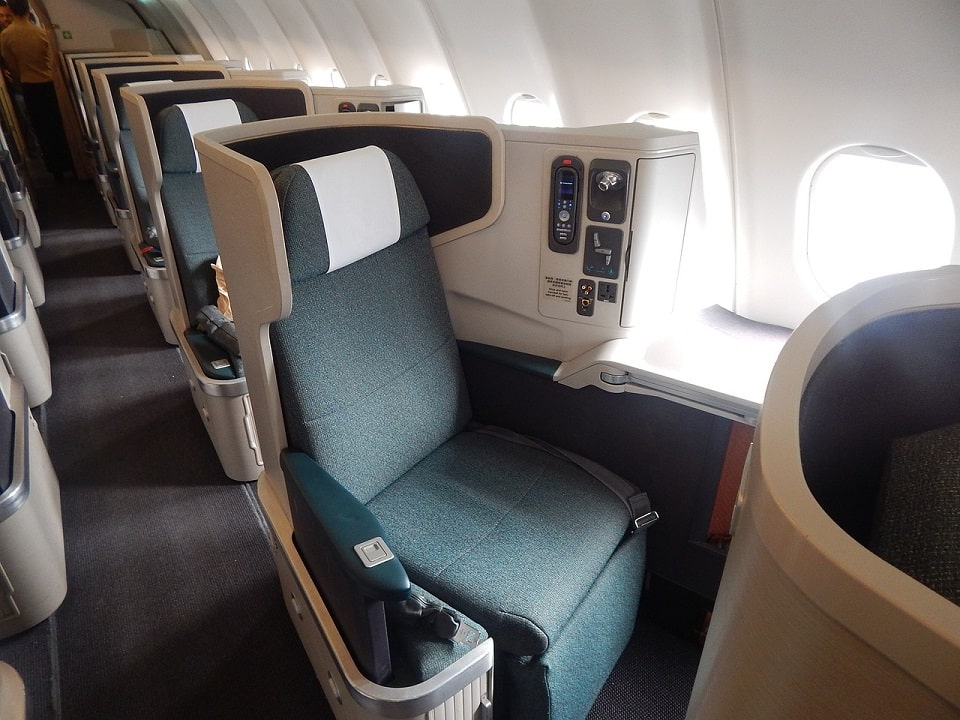Aerospace
Just weeks after the inaugural flight, a business-only airline will add economy seats.

Unless you enter the segment, the demand will always be uncertain. Only a few weeks after its inaugural flight, a new airline that promised all-business class cabins has abandoned its plans.
As it is realized by the company that it is difficult to find all business class passengers, one of the airlines that was announced to start its all business class airlines is now slightly turning back to the dual-class seats segment.
BermudAir, which describes itself as being built for “business and premium leisure travelers,” announced an industry-leading method of air travel before its inaugural trip from Bermuda to Boston in the US in August.
According to One Mile at a Time, it had planned to set up its two leased Embraer E175 aircraft, which were originally a part of the fleet of the now-defunct British airline Flybe, commencing on November 1 so that there would have been 30 seats distributed across 15 rows.
However, passengers will now have the choice to fly in economy thanks to BermudAir’s conversion to a “dual-class” cabin arrangement.
The airline’s chief executive, Adam Scott, said in a statement to Flight Global: “Since opening in August, we have stayed unwavering in our promise to improve air capacity for Bermuda and fulfil the business and tourism needs of the island.
“A dual-class cabin gives our customers more reasons to fly with BermudAir and allows us to keep that commitment. After nearly 170 flights that were successful, it is clear that there is a huge demand for direct, short-haul, and premium flights between Bermuda and the East Coast. Despite the tremendous positive feedback our BermudAir customers have given us regarding their travel experiences, they still want more freedom and options.
Still to be decided is how the two kinds of seats will be arranged in the cabin.

Aerospace
Boeing Transfers Rocket Stage to NASA, Paving Way for Human Moon Mission

Boeing has achieved a significant milestone by providing NASA with the second core stage of the Space Launch System (SLS) rocket.
This crucial component, crafted at NASA’s Michoud Assembly Facility (MAF), is set to propel the Artemis II crew into lunar orbit, marking humanity’s return to deep space after a 50-year hiatus.
The monumental Boeing-built rocket stage, the largest element of the Artemis II mission, will embark on a journey aboard the Pegasus barge, traveling 900 miles to NASA’s Kennedy Space Center.
Comparison of two legendary aircraft B777x vs B747 aircraft:Click here
Upon arrival, it will be meticulously integrated with other essential Artemis II components, including the upper stage, solid rocket boosters, and NASA’s Orion spacecraft within the iconic Vehicle Assembly Building. This intricate integration process is a vital step toward the eagerly anticipated Artemis II launch, slated for 2025.
“Boeing-built products helped land humankind on the moon in 1969, and we’re proud to continue that legacy through the Artemis generation,” remarked Dave Dutcher, vice president and program manager for Boeing’s SLS program. “Together, with NASA and our industry partners and suppliers, we are building the world’s most capable rocket and paving the way to deep space through America’s rocket factory in New Orleans.”
NASA, Lockheed Martin Reveal X-59 Quiet Supersonic Aircraft:Click here
The delivery of Core Stage 2 marks a significant achievement in the evolution of the SLS rocket. Towering over 200 feet and powered by four RS-25 engines, this core stage, coupled with two solid-fueled booster rockets, will generate a staggering 8.8 million pounds of thrust. This immense power is crucial to launching Artemis II and future missions into the vast expanse of space.
The SLS rocket stands unparalleled in its capability to transport both crew and substantial cargo to the moon and beyond in a single launch. Its extraordinary capacity will facilitate the delivery of human-rated spacecraft, habitats, and scientific missions to destinations including the moon and Mars, ushering in a new era of space exploration.
-

 Travel1 week ago
Travel1 week agoAir India to Expand US Operations with Three New Routes After a Decade
-

 Travel2 weeks ago
Travel2 weeks agoWhy We Should Avoid These Stamps in a Passport
-

 Airlines1 month ago
Airlines1 month agoInvestigations Reveal Fake Chinese Titanium in Boeing and Airbus Jets
-

 Tech4 weeks ago
Tech4 weeks agoChina’s CATL Plans 1,800-Mile Electric Plane Launch by 2027
-

 Airport3 days ago
Airport3 days agoTop 10 Largest Airports in the World by Size
-

 Aerospace4 weeks ago
Aerospace4 weeks agoChina’s Fighter Jets Turn Wings into Autonomous Drones
-

 Airlines4 days ago
Airlines4 days agoAir India Rolls Out A350s for Delhi-New York JFK and Newark Routes
-

 Defence3 weeks ago
Defence3 weeks agoBoeing Enhances Chinook with New Engines and Block II Upgrades at $96 Million







